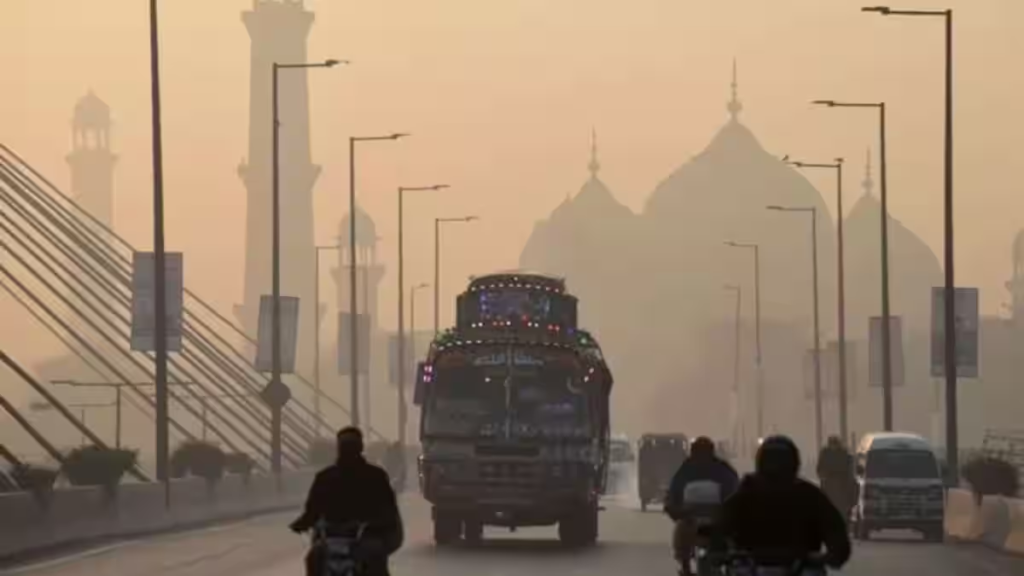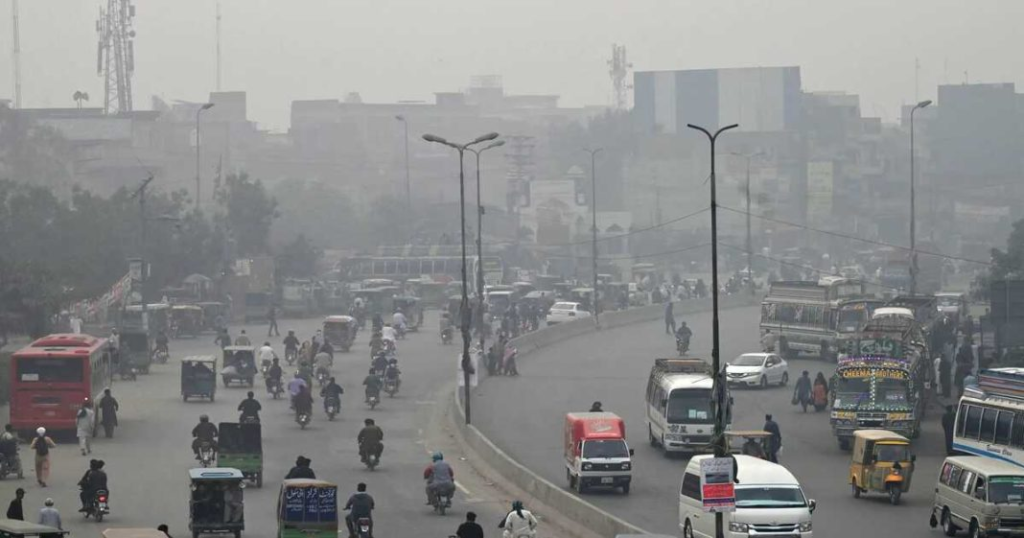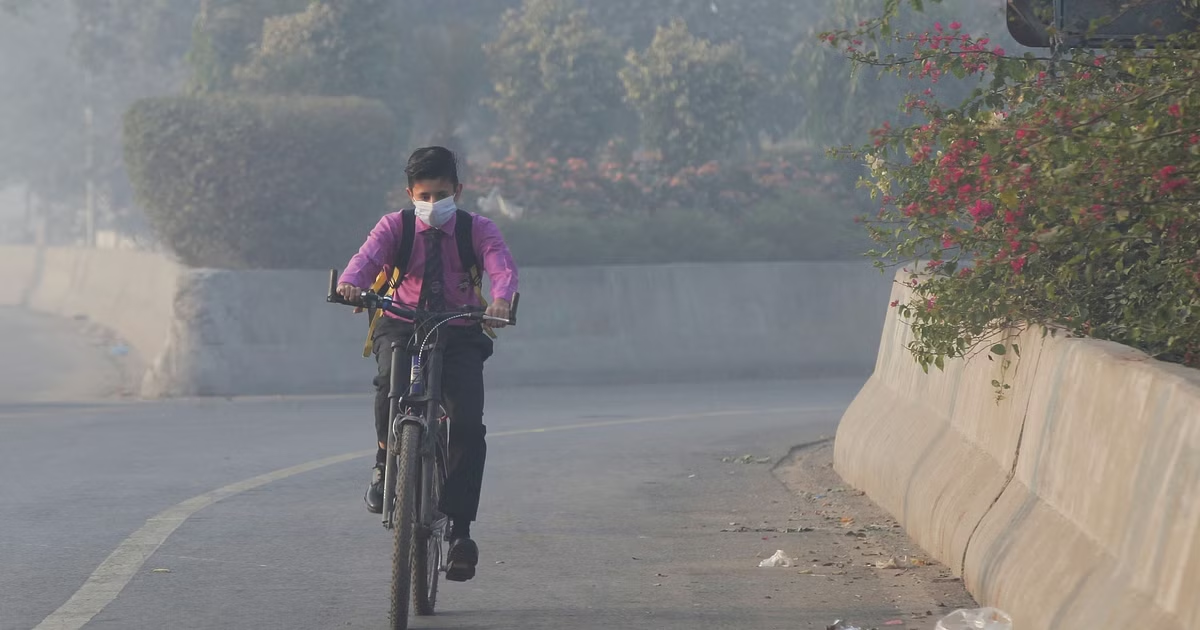The city of Lahore has recently been declared the world’s most polluted city, with a staggering Air Quality Index (AQI) of 394. This hazardous level of air pollution has led to serious health concerns for residents, ranging from respiratory issues to eye irritation.
In response, the government of Punjab has initiated a series of measures to address the crisis, including the innovative plan of creating artificial rain to combat the smog. Additionally, various awareness campaigns and policy shifts aim to reduce the pollution levels over the long term.
The Growing Air Quality Crisis in Lahore
Lahore’s pollution crisis has been steadily worsening, exacerbated by several contributing factors. One of the primary sources of the high pollution levels is crop residue burning, particularly in rural areas surrounding the city.
Farmers traditionally burn leftover stubble from rice and wheat crops, releasing enormous amounts of harmful particulates into the air. Additionally, emissions from factories, vehicles, and construction activities have further compounded the problem, turning Lahore’s air into a toxic mix of pollutants.
Read : Pakistan Rebuilding Baoli Sahib Hindu temple Which Has Become Dysfunctional in 1960
The alarming AQI levels, which on many days exceed the very unhealthy threshold of 150, have resulted in widespread health problems. The situation is particularly dire for children and the elderly, as they are more vulnerable to the adverse effects of pollution.
Symptoms such as persistent coughing, difficulty breathing, skin infections, and irritated eyes are now commonplace among Lahore’s population. Schools and workplaces are also being affected, with closures often necessary when pollution levels become intolerable.
In an attempt to curb these rising health risks, the Punjab government has taken unprecedented steps. The decision to create artificial rain is seen as a temporary but necessary measure to alleviate the immediate impact of smog on public health. By inducing rain, pollutants in the air can be washed down to the ground, temporarily clearing the air and providing much-needed relief to the residents of Lahore.
This effort is in its early stages, but the authorities hope it will reduce the particulate matter hanging over the city and offer a short-term respite from the toxic air.
Government Initiatives to Combat Smog
The plan for artificial rain is just one part of a broader strategy the government has put in place to tackle Lahore’s pollution crisis. Led by Punjab Information Minister Azma Bokhari and Senior Minister Marriyum Aurangzeb, the provincial government has launched an ‘Anti-Smog Squad’ to assess pollution hotspots, raise public awareness, and enforce environmental regulations more strictly.
The squad will play a key role in educating farmers about the harmful effects of burning crop residues and promoting the use of environmentally friendly alternatives such as super seeders.
The anti-smog campaign is seen as a long-term effort. According to Marriyum Aurangzeb, the positive outcomes of these measures will only become apparent in the coming years, possibly taking up to a decade to truly improve the air quality in Lahore.

As part of this comprehensive plan, the provincial curriculum now includes environmental protection lessons, aiming to raise awareness among the younger generation about the importance of reducing pollution and protecting the environment.
This ‘war on smog,’ as described by Aurangzeb, focuses on several fronts. Farmers are a critical target, as their agricultural practices significantly contribute to seasonal smog formation.
In addition to spreading awareness, the government is encouraging the use of modern technology to reduce the reliance on stubble burning as a disposal method. Super seeders and other equipment allow farmers to plough the crop residue back into the soil, avoiding the need to burn it and thus cutting down on air pollution.
However, this transition to more sustainable farming practices will take time and requires both incentives and continued education efforts to be fully adopted by the agricultural sector.
Climate Diplomacy and Regional Cooperation
While internal measures are crucial, Pakistan’s air quality crisis is also linked to transboundary pollution, especially from neighboring India. Stubble burning in the Indian state of Punjab directly impacts Lahore’s air quality due to the prevailing wind patterns, which carry the smoke across the border.
Recognizing this, Punjab Chief Minister Maryam Nawaz has called for ‘climate diplomacy’ with India. She stressed the need for regional cooperation to tackle this shared problem, urging India and Pakistan to collaborate on reducing crop burning and addressing other sources of pollution that contribute to the smog crisis.
Nawaz’s call for diplomacy highlights the complexities of environmental issues, which often transcend national borders. Both countries have a vested interest in improving air quality, not only for the health of their citizens but also for economic reasons.

Smog severely disrupts daily life, causes traffic delays, and impacts industries such as tourism and agriculture. Moreover, prolonged exposure to high levels of pollution can have long-term health consequences, increasing the burden on healthcare systems in both countries.
While there has been little progress in official talks between India and Pakistan in recent years due to political tensions, the growing pollution crisis may provide a unique opportunity for cooperation.
Climate change and environmental degradation know no borders, and Nawaz’s proposal for joint efforts to combat smog could pave the way for dialogue between the two nations on this critical issue. Both sides would benefit from coordinated action to reduce stubble burning, improve emissions regulations, and promote cleaner energy solutions across the region.
In the meantime, Pakistan’s government continues to push forward with its domestic initiatives. By raising awareness, enforcing environmental laws, and investing in pollution control technologies, the hope is that Lahore’s air quality can gradually be improved.
However, it is clear that the fight against smog will require sustained effort over many years, as well as cooperation on a global scale to address the root causes of air pollution and climate change.
Lahore’s status as the world’s most polluted city has brought the issue of air quality in Pakistan to the forefront. The Punjab government’s plans for artificial rain and the establishment of anti-smog squads are crucial steps in addressing the immediate dangers posed by the toxic air.

However, long-term solutions will depend on continued efforts to educate the public, enforce regulations, and promote cleaner technologies. Additionally, regional cooperation, particularly with India, will be essential in reducing cross-border pollution and tackling the underlying causes of smog in the region.
As Lahore’s residents continue to grapple with the health effects of pollution, the path forward remains challenging. While the government’s response shows a willingness to tackle the crisis head-on, the success of these initiatives will require time, persistence, and a multi-faceted approach that addresses both domestic and international factors.
Only then can Lahore hope to shed its title as the world’s most polluted city and move towards a cleaner, healthier future.
let’s enjoy few years on earth with peace and happiness….✍🏼🙏

